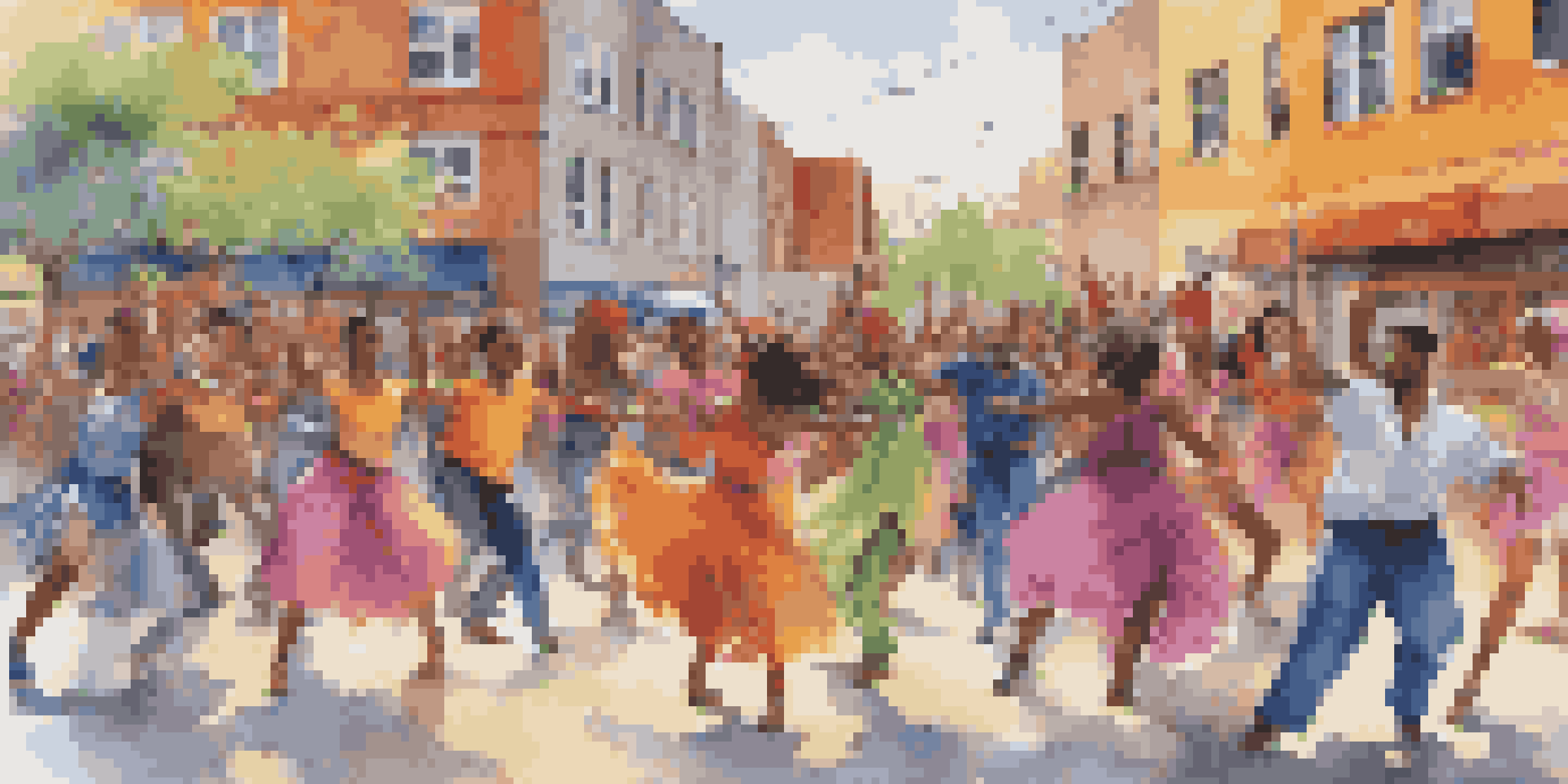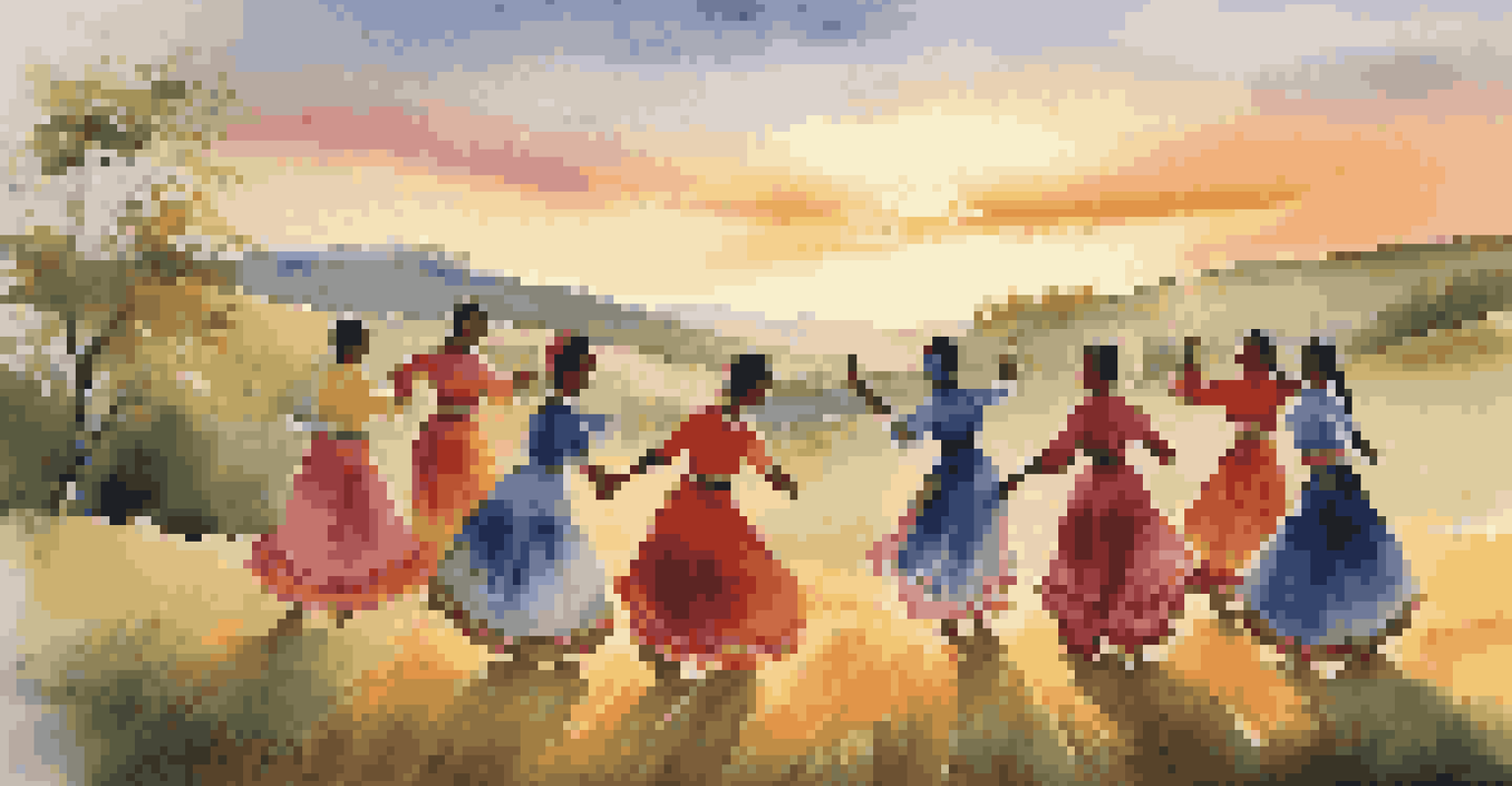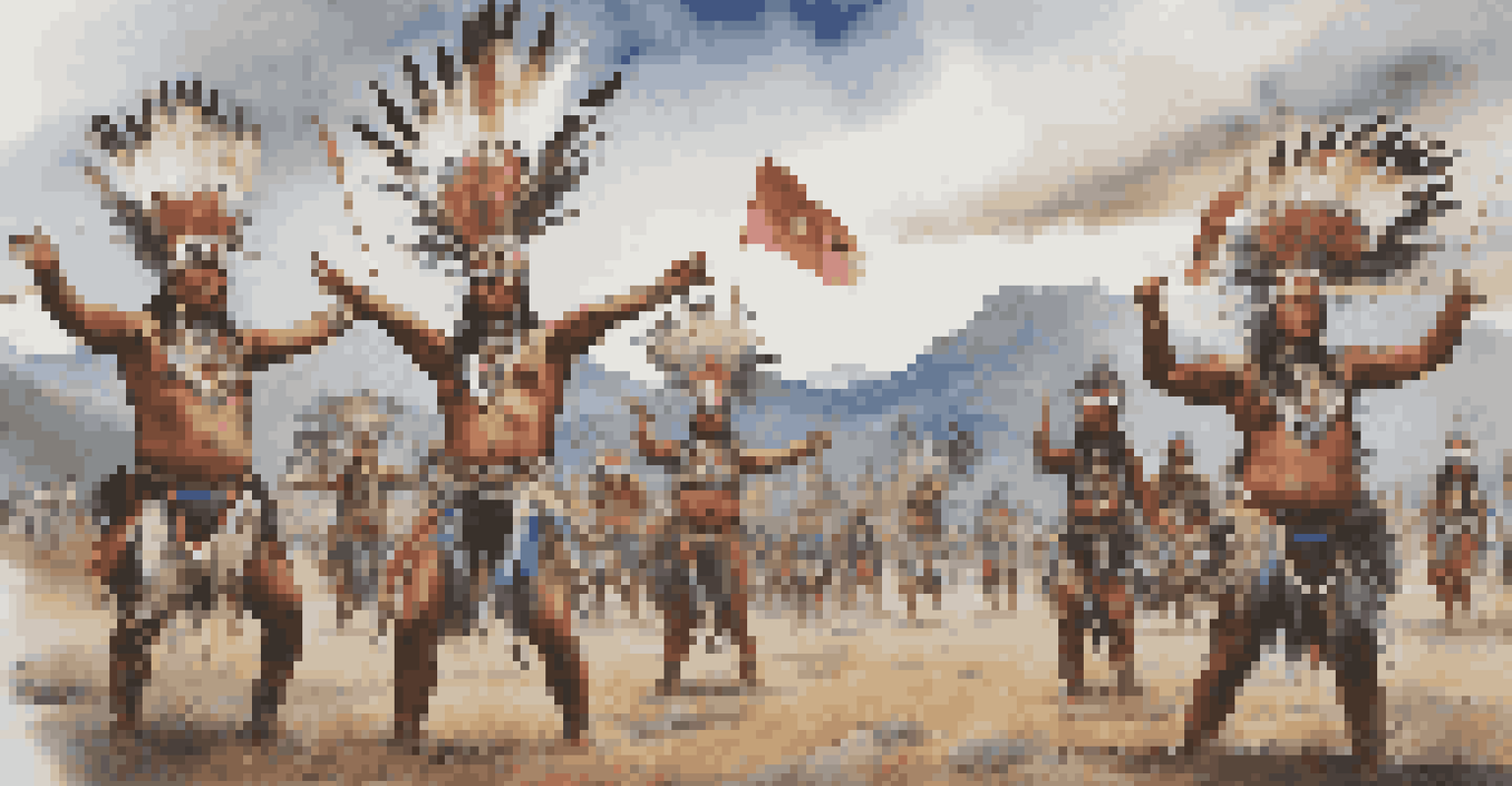The Role of Dance in Social Movements Across Different Cultures

Dance as a Universal Language in Activism
Throughout history, dance has served as a universal language, transcending barriers and uniting people in their shared struggles. It allows individuals to express emotions and messages that words sometimes cannot capture. For instance, during the Civil Rights Movement in the United States, African American spirituals and dances became powerful tools for conveying hope and resilience.
Dance is the hidden language of the soul.
In many cultures, traditional dances reflect societal values and serve as a means of sharing stories and histories. These dances often become integral to social movements, as they help to articulate collective identities and goals. By participating in these dances, communities reinforce their commitment to a cause, fostering a sense of belonging and unity.
Moreover, the energy and passion embodied in dance can galvanize support and draw attention to important issues. In this way, dance becomes not just an art form but a vital part of the activism toolkit, bringing people together to fight for change.
Cultural Expressions and Their Impact on Movements
Every culture has its unique dance forms, each with the power to express the struggles and hopes of its people. For instance, the traditional Haka dance of the Māori people serves as a powerful expression of identity and pride, often performed at significant events to rally support and solidarity. This cultural expression showcases how dance can be a rallying cry for social justice.

In South Africa, the dance known as the Gumboot dance emerged from the oppressive conditions of migrant labor. Its rhythmic movements and clapping embodied the workers' defiance against their circumstances, transforming pain into a powerful form of protest. This example highlights how dance can serve as both a coping mechanism and a form of resistance.
Dance Unites and Empowers Activism
Throughout history, dance has transcended barriers, serving as a powerful tool for expressing collective struggles and fostering community solidarity.
As these cultural expressions gain visibility, they can inspire movements beyond their original context, creating a ripple effect. Activists may adopt these dances to resonate with broader audiences, illustrating how dance acts as a bridge between cultures in the fight for social change.
Folk Dances: A Tool for Community Solidarity
Folk dances often emerge as vital expressions of community identity, particularly during times of social upheaval. These dances, steeped in tradition, are not just performances; they embody the collective spirit and historical narratives of a community. During the Arab Spring, for example, folk dances were revived as a way to foster solidarity and express shared aspirations for freedom.
The body says what words cannot.
Communities often organize dance gatherings as a means to strengthen bonds and ignite collective action. These events become spaces where individuals can come together, share their stories, and support one another in their struggles. The act of dancing side by side reinforces a sense of unity and purpose among participants.
Furthermore, folk dances can be a way to reclaim cultural heritage that may have been suppressed or marginalized. By celebrating these dances, communities assert their identity and resilience in the face of adversity, using dance as a powerful form of resistance against oppression.
Contemporary Dance as a Form of Protest
In recent years, contemporary dance has emerged as a dynamic form of protest, often blending different styles to convey complex social messages. Choreographers and dancers are increasingly using their art to address pressing societal issues, from climate change to racial injustice. For example, performances in public spaces can draw crowds and spark conversations, turning dance into a living, breathing statement of resistance.
Moreover, social media platforms have enabled dancers to share their messages globally, reaching audiences far beyond their immediate communities. Viral dance challenges, for instance, can quickly mobilize support for various causes, demonstrating the potential of contemporary dance to amplify voices that might otherwise go unheard.
Cultural Dances Inspire Wider Movements
Unique cultural dances not only reflect identity and heritage but also inspire broader social movements, bridging gaps between different communities.
This evolution of dance as a medium for protest underscores its adaptability and relevance in modern society. By combining creativity with activism, contemporary dance continues to inspire individuals and movements around the world, fostering a culture of resistance and resilience.
Dance and Gender: Empowering Women in Movements
Dance has often played a pivotal role in empowering women within social movements, allowing them to reclaim their voices and assert their rights. For instance, in Latin America, traditional dances have been revitalized as a means for women to express their stories of struggle and resilience, highlighting their contributions to social change. These performances not only celebrate their culture but also challenge societal norms regarding gender roles.
Moreover, dance can serve as a powerful tool for raising awareness about gender-based violence and inequality. Movements like One Billion Rising encourage women to dance in solidarity against violence, transforming a simple act into a powerful statement of resistance and hope. This global dance initiative illustrates how collective action through dance can foster a sense of empowerment and community among women.
As women take the stage, both literally and metaphorically, they redefine their roles in society and inspire others to join their fight for equality. Dance becomes a medium not just for personal expression but for collective empowerment, reinforcing the idea that every step taken in solidarity brings them closer to justice.
The Role of Dance in Indigenous Rights Movements
For many Indigenous cultures, dance is deeply intertwined with their identity and heritage, making it a powerful element in movements advocating for Indigenous rights. Traditional dances often convey ancestral stories and connection to the land, reinforcing the importance of cultural preservation. During protests, such as those against the Dakota Access Pipeline, Indigenous dancers used their art to assert their rights and educate the public about their struggles.
These dances not only serve as a form of cultural expression but also as a means of healing and resilience for Indigenous communities. By reclaiming traditional dance practices, these communities reinforce their identity and foster solidarity among members. Dance becomes a way to honor their ancestors while standing firm against external pressures and injustices.
Future of Dance in Activism is Bright
As technology evolves, dance will increasingly become a vital medium for addressing complex societal issues and uniting voices for change.
Furthermore, the visibility of Indigenous dance in social movements can educate wider audiences about the significance of Indigenous rights and environmental issues. As these dances take center stage, they invite conversations about respect, recognition, and reconciliation, highlighting the power of dance in advocating for justice.
The Future of Dance in Social Movements
As we look to the future, the role of dance in social movements is likely to evolve even further. With the rise of technology and digital platforms, the potential for dance to convey messages of change will only expand. Virtual performances and online dance challenges can connect activists globally, fostering solidarity across borders and cultures.
Moreover, as societal issues become increasingly complex, dance may serve as a means to explore and express these nuances. Choreographers and dancers may create works that delve into pressing topics like mental health, climate change, and systemic inequality, using their art to inspire dialogue and action. This adaptability ensures that dance remains relevant and impactful in the face of new challenges.

Ultimately, the future of dance in social movements will be shaped by the creativity and passion of those who wield it as a tool for change. As long as there are stories to tell and injustices to address, dance will continue to play an essential role in uniting people and empowering them to make their voices heard.